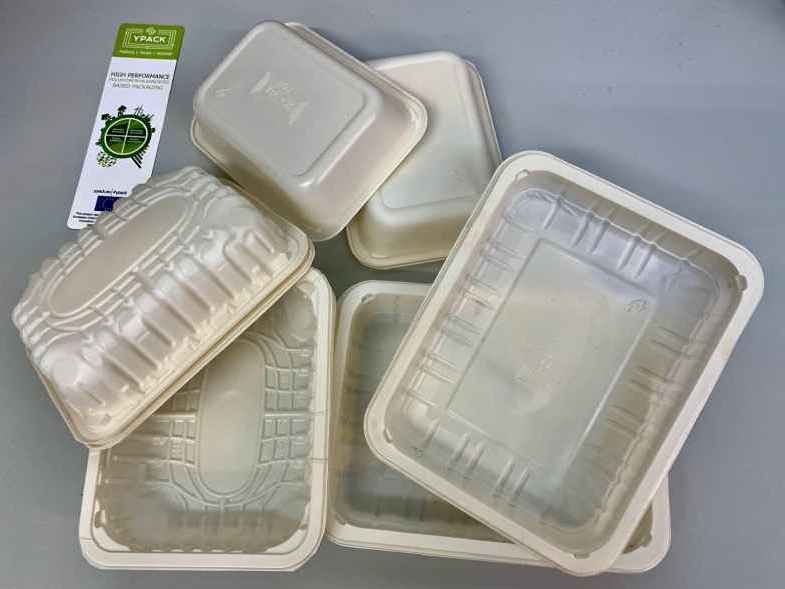Biodegradable packaging that extends the shelf life of food products
YPACK develops a material made of cheese whey and microcellulose from almond shells
Advertisement
Contamination by plastics from single-use packaging is a major sustainability problem that needs innovative solutions. The YPACK project, funded by the European Union (EU) and led by the Spanish National Research Council (CSIC), has developed and patented a material from by-products of the food industry as an alternative to traditional food packaging. The new packaging can extend the shelf life of meat, fish or vegetables and degrade within 90 days of disposal, while reducing food waste, which is one of the objectives of the EU's circular bio-economy strategy.

Results on an industrial scale of packaging produced with the technology to increase the shelf life of fresh products such as meat, fruit, vegetables and fresh pasta
YPACK
YPACK, which concludes in October 2020, is a project aimed at expanding production and commercially validating two innovative food packaging solutions based on polyhydroxyalkanoates (PHAs): a food contact film and a tray, both of which are fully compostable. After developing the contact film, a multidisciplinary team of 21 partners from 10 EU member countries has now created a compostable packaging made of a sustainable material, poly(3-hydroxybutyrate-co-3-hydroxivalerate) (PHBV), which is produced from cheese whey and micro-cellulose from almond shells.
"The ideal package implies lower carbon and water footprints, is environmentally biodegradable and compostable, makes use of waste or by-products, is ecologically designed, safe and has the right preservation properties to minimize food waste. YPACK is fulfilling this vision," explains José María Lagarón, a CSIC researcher at the Institute of Agrochemistry and Food Technology (IATA-CSIC) and coordinator of the project.
Active packaging
The experts have sought to make the packaging not only biodegradable, but also active, that is, actively involved in the preservation of the product. In a previous step, in the development of the new material of the project "that we call bio-paper", PHBV was used from by-products of the food industry and zinc oxide and essential oil of oregano were incorporated, two active ingredients. These compounds have good antimicrobial activity against two bacteria that can cause food poisoning: Staphylococcus aureus (Staphylococcus aureus) and Escherichia coli (E. coli).
The researchers discovered an optimal proportion of the active ingredients, zinc oxide and oregano essential oil, which showed antibacterial effects in the short, 15 days, and medium term, up to 48 days, in open and closed systems. In other words, the formula could be used for food products where the package is opened and closed several times, for example in the case of slices of bread or slices of ham. Therefore, the scientists say, it could be used both in trays and in food contact film as an active layer.
The results in the pilot phase show the potential of active bio-based packaging to increase the shelf life of fresh products such as meat, fruit, vegetables and fresh pasta. The next step will be to evaluate the validity of industrial packaging on these types of fresh products, which are the most wasted. This will be done by conducting a consumer profile and market research to identify consumer preferences and market needs and combine these with new EU regulations and the development of packaging materials. So far, the YPACK project has carried out a preliminary study involving more than 7,000 consumers in seven countries (Denmark, France, Hungary, Netherlands, Portugal, Spain, Turkey). The results show the acceptance of the use of almond shells and cheese whey in food packaging materials as well as passive and active packaging technologies. Although, due to regulatory restrictions within the EU, the final packaging of YPACK will not contain, in the first instance, an active layer, but will be made exclusively of biodegradable PHBV.
Note: This article has been translated using a computer system without human intervention. LUMITOS offers these automatic translations to present a wider range of current news. Since this article has been translated with automatic translation, it is possible that it contains errors in vocabulary, syntax or grammar. The original article in Spanish can be found here.




























































